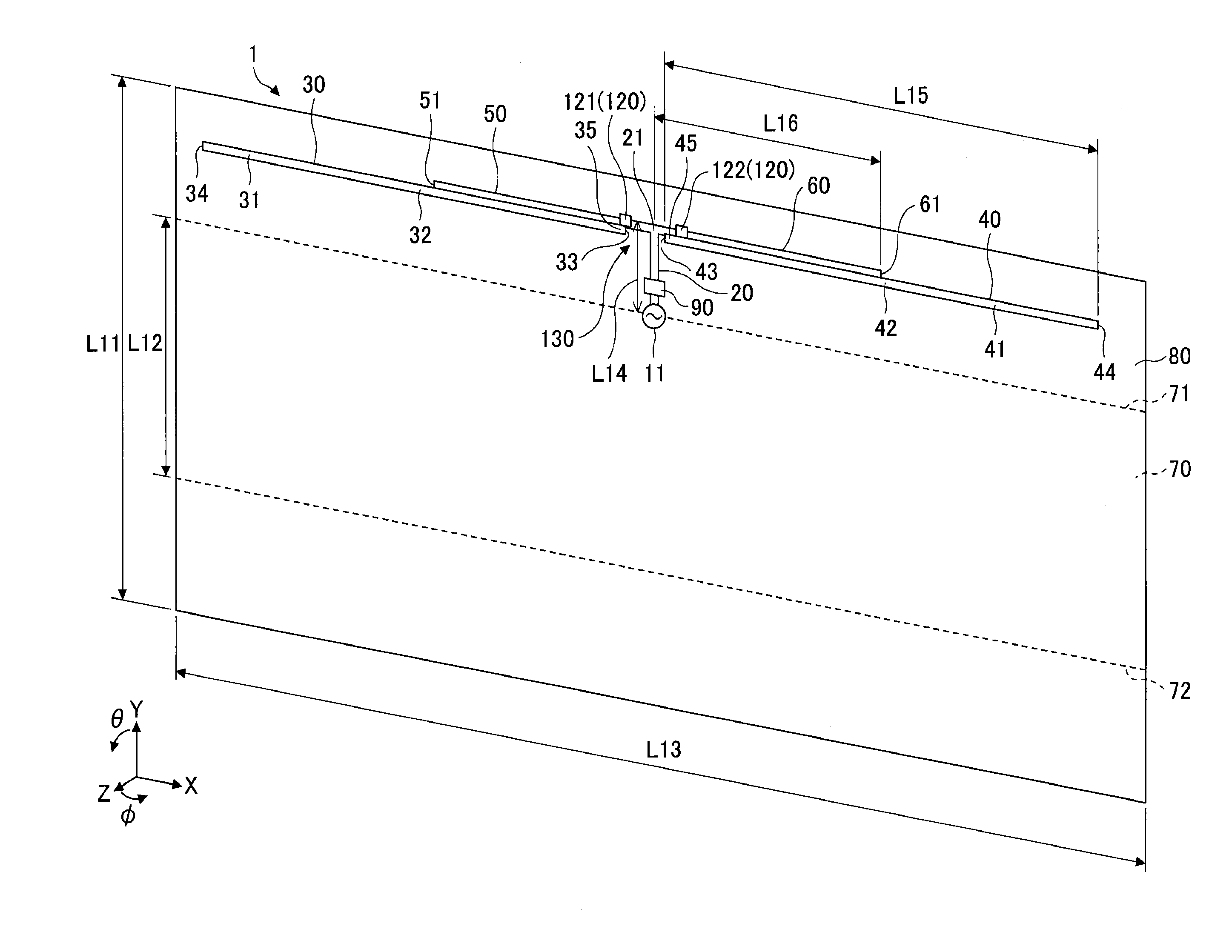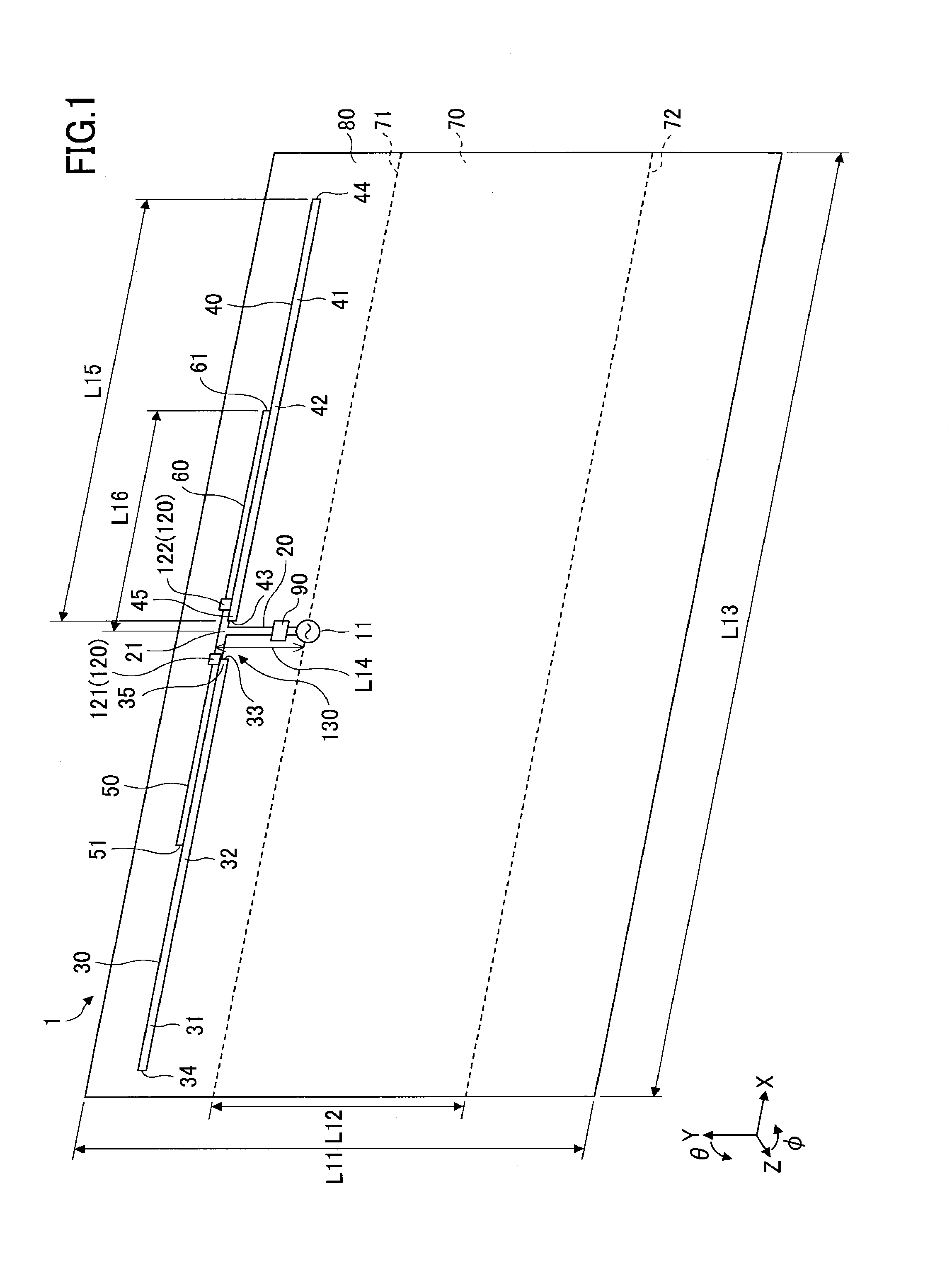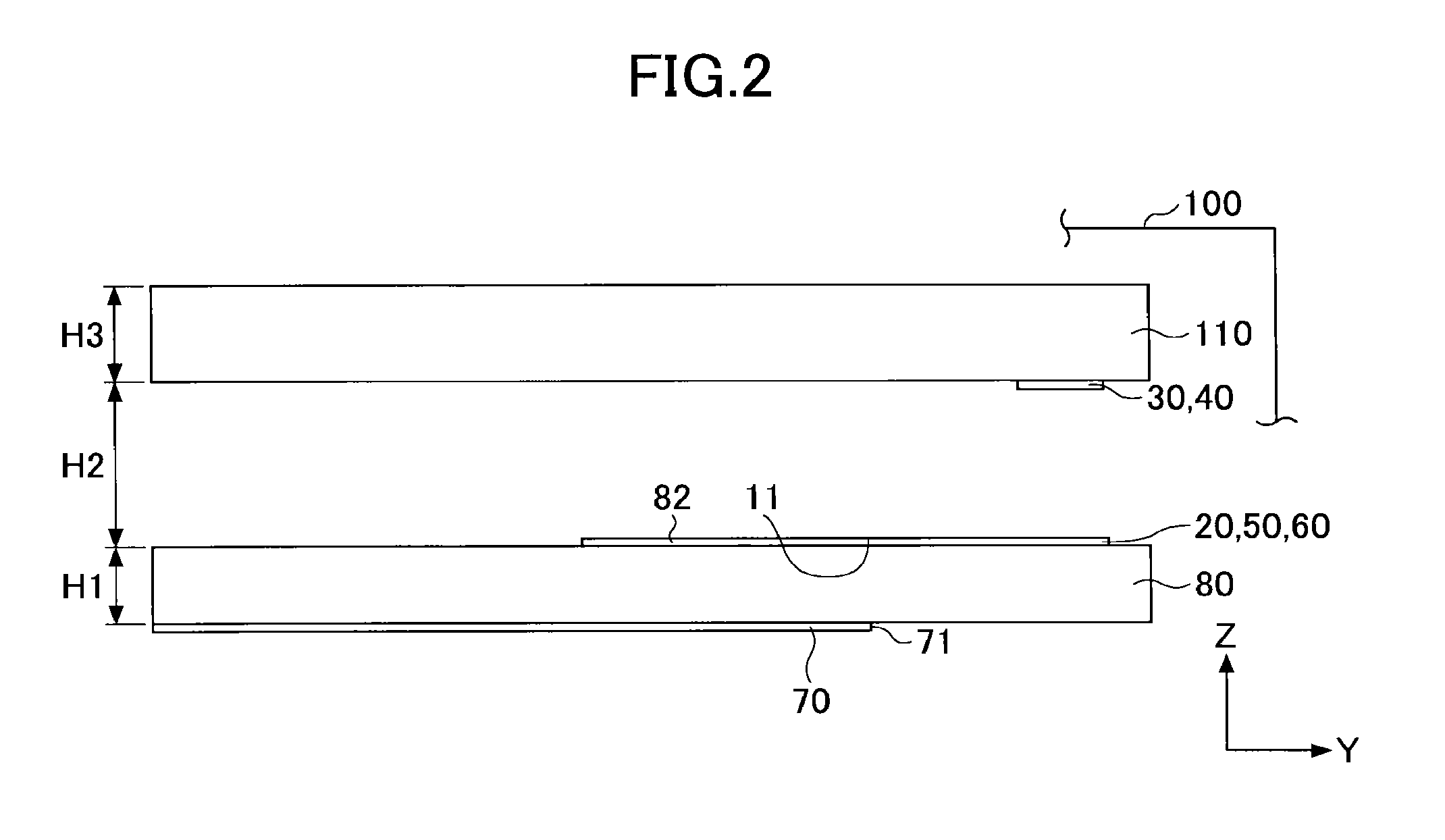Antenna, antenna device, and wireless device
a wireless device and antenna technology, applied in the direction of antennas, antennas earthing switches, antenna feed intermediates, etc., can solve the problem of difficult control of the directivity of the antenna
- Summary
- Abstract
- Description
- Claims
- Application Information
AI Technical Summary
Benefits of technology
Problems solved by technology
Method used
Image
Examples
first embodiment
[0046]FIG. 1 is a perspective view of an exemplary computer simulation model for analyzing the operation of an antenna 1 according to the present invention. Note that in the present example, CST Microwave Studio (registered trademark) by Computer Simulation Technology AG (CST) was used as an electromagnetic field simulator.
[0047]The antenna 1 includes a feeding point 11, a ground plane 70, a feeding element 20, a first radiating element 30, a second radiating element 40, a first feeding portion 35, a second feeding portion 45, a first control element 50, a second control element 60, and an impedance control unit 120. Note that in the following descriptions, the first radiating element 30, the second radiating element 40, the first feeding portion 35, the second feeding portion 45, the first control element 50, and the second control element 60 may simply be referred to as “radiating element 30,”“radiating element 40,”“feeding portion 35,”“feeding portion 45,”“control element 50,” an...
second embodiment
[0139]FIG. 7 is a perspective view of a computer simulation model for analyzing the operation of an antenna device 201 including antennas 1 and 2 according to the present invention. Note that in the present example, CST Microwave Studio (registered trademark) by Computer Simulation Technology AG (CST) was used as an electromagnetic field simulator. Also, note that descriptions of features of the present embodiment that may be substantially identical to those of the embodiment described above may be simplified or omitted.
[0140]The antenna 2 of the antenna device 201 may have a configuration that is substantially identical to the configuration of the antenna 1, and is arranged on the opposite side of the antenna 1 with respect to the ground plane 70. The antenna 2 includes a feeding element 22, a radiating element 36, a radiating element 46, a control element 52, a control element 62, an impedance control unit 125, and a matching circuit 91.
[0141]The feeding element 22 is a conductor ...
third embodiment
[0147]FIG. 8 is a perspective view of a computer simulation model for analyzing the operation of an antenna 3 according to the present invention. Note that in the present example, CST Microwave Studio (registered trademark) by Computer Simulation Technology AG (CST) was used as an electromagnetic field simulator. Also, note that descriptions of features of the present embodiment that may be substantially identical to those of the embodiments described above may be simplified or omitted.
[0148]The antenna 3 includes a ground plane 70, a plate conductor 150, a feeding element 20, a radiating element 160, a radiating element 170, a control element 50, a control element 60, an impedance control unit 120, and optionally, a matching circuit 90. Note that the feeding element 20, the control element 50, the control element 60, the impedance control unit 120, and the matching circuit 90 may be substantially identical to those described above with reference to FIG. 1.
[0149]The ground plane 70 ...
PUM
 Login to View More
Login to View More Abstract
Description
Claims
Application Information
 Login to View More
Login to View More - R&D
- Intellectual Property
- Life Sciences
- Materials
- Tech Scout
- Unparalleled Data Quality
- Higher Quality Content
- 60% Fewer Hallucinations
Browse by: Latest US Patents, China's latest patents, Technical Efficacy Thesaurus, Application Domain, Technology Topic, Popular Technical Reports.
© 2025 PatSnap. All rights reserved.Legal|Privacy policy|Modern Slavery Act Transparency Statement|Sitemap|About US| Contact US: help@patsnap.com



